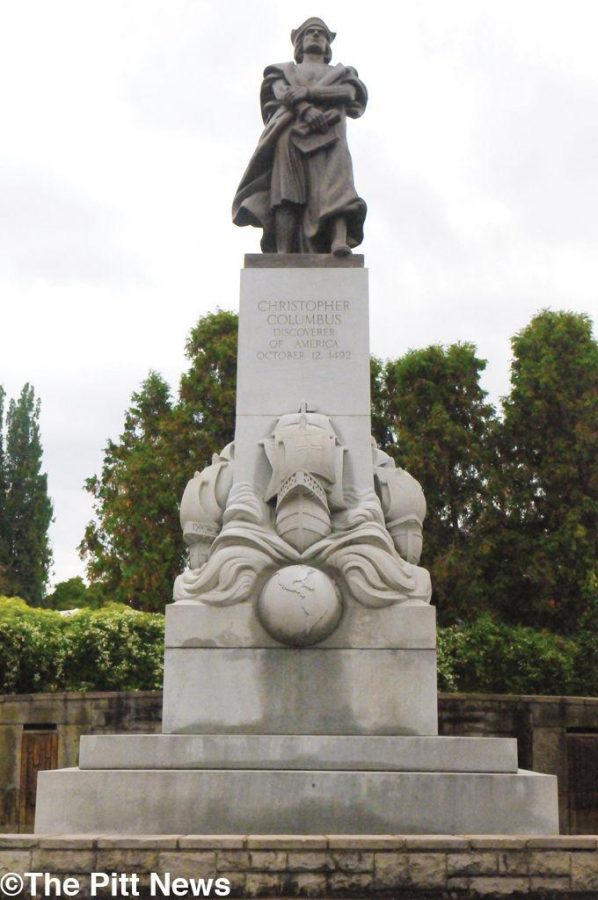Statue raises concerns over Columbus Day legitimacy
October 13, 2014
Its hands are now clean, but they were once the color of blood.
The statue of Christopher Columbus in Schenley Park, just outside of Phipps Conservatory, is a monument many Pitt students pass by as they enter the park. The statue, which has been a feature in the park since 1958, has been a target for vandals in the past few years who have defaced the bronze and Barre granite statue’s hands and body.
This Columbus Day passed without incident. In the past few years, there were multiple incidents of vandalism according to reports filed by Morton Brown, Pittsburgh’s public art manager under the Department of City Planning’s Public Art Division, with the Pittsburgh Bureau of Police.
In 2010, vandals painted the statue’s hands red and sprayed words and phrases such as “Butcher” and “Death to civilization.”
Brown reported the incidents, which occurred on three separate occasions, to the Pittsburgh Bureau of Police. He said although the police took the reports “very seriously” and staked out the area surrounding the statue during that time and in the following years, the police never identified the culprits.
Brown said he hasn’t filed any reports of the statue being vandalized since 2010.
The monument in Schenley Park is one of many across the country that have been vandalized every year, especially around Columbus Day, which, Brown said, may relate to the controversial nature of the statue and Columbus Day. Though nearly all Americans know Columbus to be the “discoverer” of America, many also know him to have enslaved and killed many indigenous people in the West Indies, where he landed in 1492. Four U.S. states — Hawaii, Alaska, Oregon and South Dakota — do not celebrate Columbus Day, according to Hawaii.gov. Seattle, Wa., Brown said, celebrated “Indigineous Peoples Day” this year instead of Columbus Day.
“I think nationwide there has been a lot of public opinion shifting away from what we were all taught in school [about Christopher Columbus],” Brown said.
Brown said there is a need to recognize the indigenous populations of America but said there are more productive ways of making statements than vandalization of public property.
“It forces taxpayers to have to pay for destructive tendencies,” Brown said. “It doesn’t reach the folks they want to get to. It’s not the way I would spread the message for any cause.”
The 2010 repairs to the statue cost the city $15,000, according to Brown.
Ann Follette, communication coordinator for the Native American Student Organization, said Columbus reminds her about “the genocide of an entire group of people.”
Despite her feelings about Columbus, Follette, a College of General Studies student majoring in the humanities, said she and other members of NASO try not to dwell on the past.
“We focus on the positive things,” Follette said. “We try to make people aware that we’re still here.”
Follette said the statue of Columbus should not be in Schenley Park and that Columbus should not be celebrated in schools.
“He is not someone who should be admired,” Follette said.
The Pittsburgh chapter of the Sons of Columbus began raising funds for the statue in 1909. In 1951, the Sons of Columbus held a national convention in Pittsburgh, according to Brown.
Italian-born sculptor Frank Vittor — who settled in Pittsburgh — completed and unveiled the statue in Schenley Park in 1958.
Scott Roller, senior manager of marketing and communication for the Pittsburgh Parks Conservancy, said the statue sparks discussion, but serves its purpose.
“We understand how complicated the issue of Columbus Day is. It instills a lot of passion in people,” Roller said. “Art like that is supposed to do that: Spark passion and start a discussion about important issues.”



